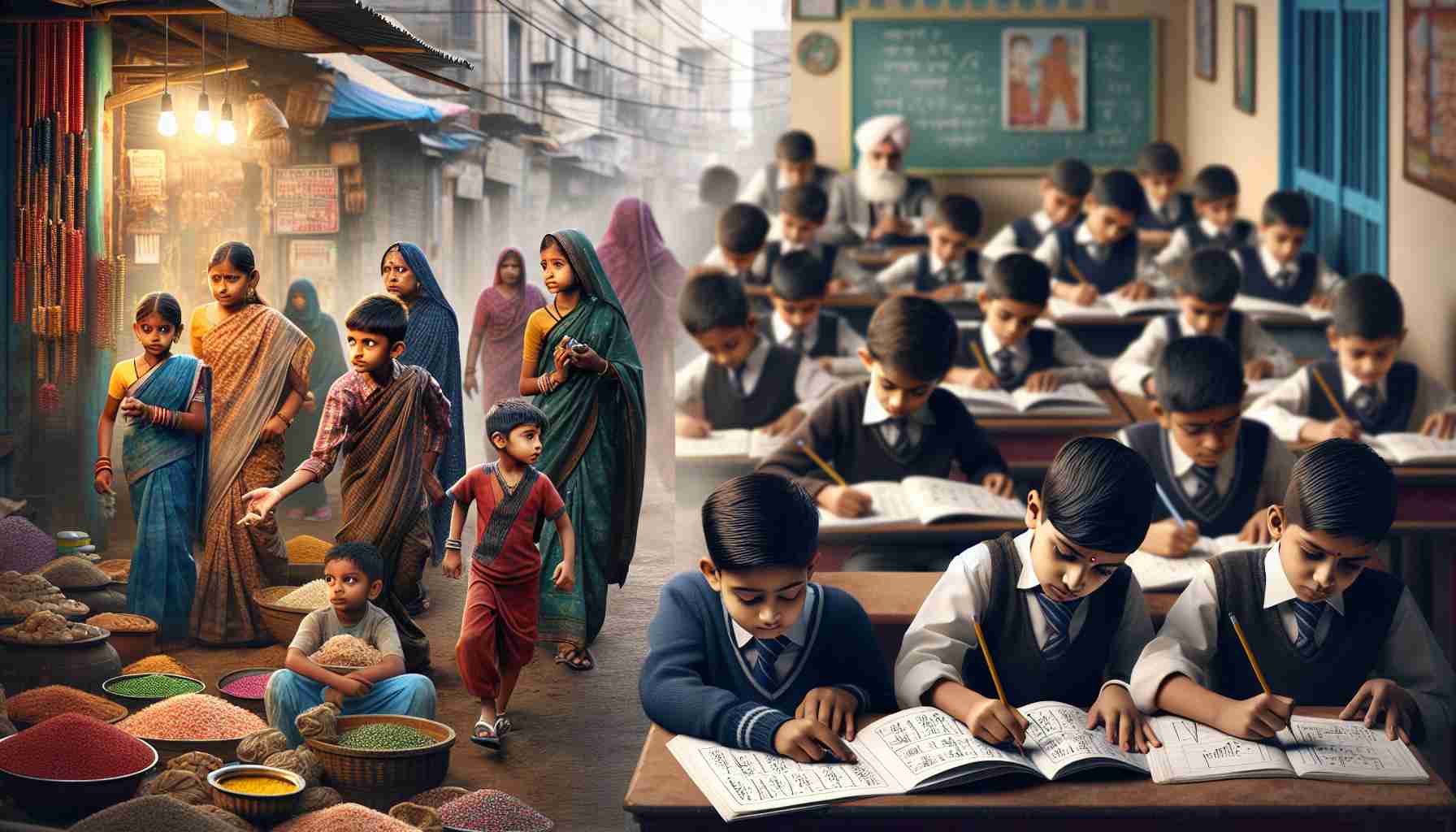- A significant divide exists in math skills between market-working children and school-attending children in India.
- Children working in markets excel in mental calculations for everyday transactions but struggle with conventional math tests.
- School-attending children perform well academically yet fail to apply their knowledge in practical situations.
- The techniques taught in school do not effectively translate to real-world math applications.
- Market vendors utilize intuition and practical strategies, while school children focus on algorithms without full comprehension.
- To improve math education, a blended approach that incorporates both practical skills and formal techniques is essential.
In the bustling streets of India, a fascinating divide in children’s math skills is unraveling. A recent study reveals a surprising truth: kids working in market stalls excel at quick mental calculations but struggle with traditional math problems taught in schools. Imagine young vendors adeptly calculating the price of vegetables, easily adding up costs to ensure no customer is shortchanged. Yet, when it comes to standardized math tests, these same children falter, demonstrating just 32% proficiency in dividing three-digit numbers.
Conversely, school-attending children shine in academic math, yet often flounder in practical, real-world scenarios. In make-believe market conditions, their success rate plummets to just 60% for similar challenges. It’s a classic example of “knowledge without application.”
As noted by prominent economists involved in the study, it appears that the techniques learned in the classroom don’t translate into the street-smart calculations needed in markets. Market kids thrive on intuition and tactics, like using rounding to simplify complex problems. Meanwhile, school children master algorithms but lack understanding, leaving them unprepared for hands-on math in everyday life.
The key takeaway? Bridging the gap between these two learning styles could enhance math education for all. It’s time to rethink our approach, embracing both practical skills and formal techniques to create well-rounded mathematical thinkers in India. As these remarkable findings show, learning isn’t just about scores or jobs—it’s about preparing children for the real world.
Unlocking the Secrets of Math Skills in India’s Children: Why Street Smarts Matter
The Fascinating Divide in Children’s Math Skills in India
In India, a compelling divide is emerging in children’s mathematical skills—a divide that showcases the contrast between practical abilities and academic performance. A recent study uncovers that while children working in market stalls display remarkable proficiency in quick mental calculations, they face significant challenges when it comes to standardized math problems taught in schools. Conversely, children who attend school excel in academic settings but often struggle to apply what they learn in real-world scenarios.
Key Insights from the Study
– Street Vendors vs. School Students: Kids working in markets demonstrate outstanding mental agility, effortlessly computing prices and ensuring accurate transactions. However, their proficiency plummets to just 32% in standardized tests that involve dividing three-digit numbers. In stark contrast, school children achieve a 60% success rate in market-simulated challenges, showcasing a disconnect between theory and practice.
– Learning Techniques: Market children rely on intuitive strategies, such as rounding numbers, enabling them to make rapid calculations. School children, trained in formal algorithms, often lack the application skills necessary for everyday tasks, leading to a situation described as “knowledge without application.”
– Education Improvement: There is a critical need to bridge the gap between these learning modes. Educational reforms should integrate practical skills alongside traditional math techniques to foster holistic thinkers capable of navigating both academic and real-world challenges.
3 Essential Questions about Math Skills Development
1. What are the root causes of the divide between practical and academic math skills?
– The divide stems from differing learning environments and teaching methodologies. Market children learn through practice and necessity, while school children focus on theoretical principles, thus limiting their ability to apply knowledge in varied contexts.
2. How can educators integrate practical math skills into the curriculum?
– Educators can implement interactive and experiential learning approaches, such as real-life math applications, gamified learning, and problem-based assessments that mimic market scenarios, allowing students to practice their skills in contexts they can relate to.
3. What implications does this divide have for future education policies?
– This divide highlights the necessity for educational reform that balances theoretical knowledge with practical skills. Policies should promote curricula that favor real-world applications of math, helping students become proficient in both academic and practical domains.
Related Links
– Ministry of Education
– U.S. Bureau of Labor Statistics
– World Bank Education
In summary, the findings from this study present an opportunity to revolutionize math education in India by acknowledging and embracing diverse learning methods. By fostering an educational environment that values both practical skills and formal techniques, we can equip future generations with the well-rounded mathematical capabilities necessary for success in the modern world.
